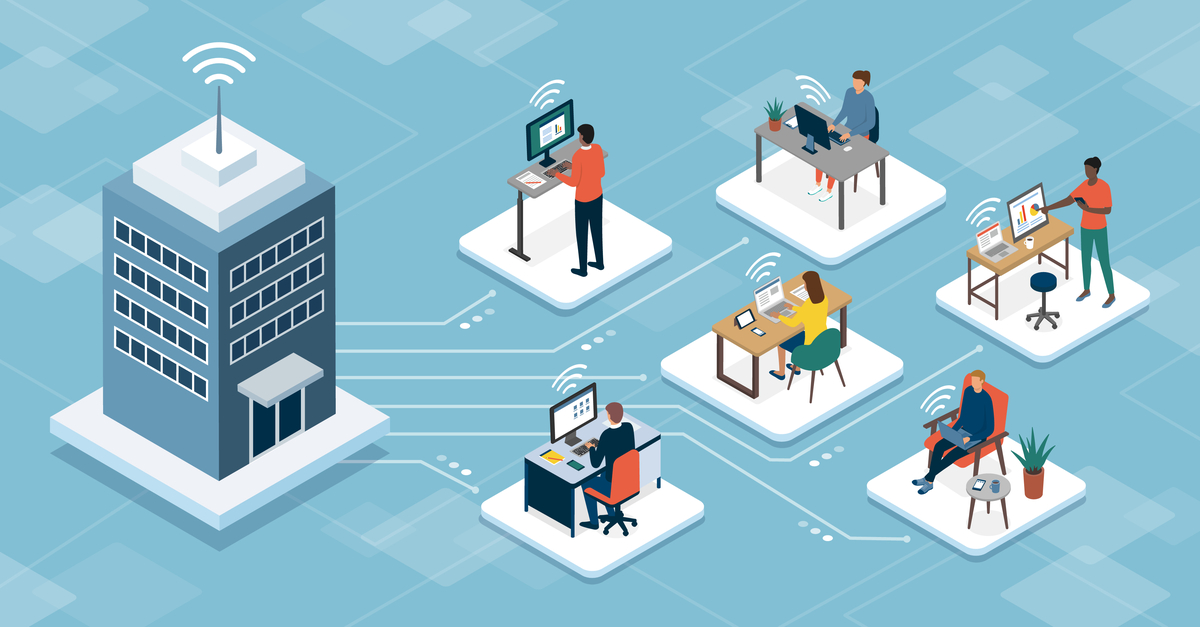Vesalii Online Interactive Lecture
Vesalii Online Interactive Lecture System OILS is the latest innovation brought by Vesalii to allow users to create and join lectures presented using Vesalii applications remotely or on-site.
The world’s most advanced 3D anatomy platform
Vesalii designed and released the Online Interactive Lecture System to primarily allow medical education in complex subjects like anatomy, histology, and radiology to continue on course while also adhering to measures implemented to curb the spread of COVID-19 and ensure the safety of professors and students. Remotely teaching complex medical subjects has not been easy nor effective due to limitations presented by the nature of teaching these subjects and due to limitations in the currently available technologies and solutions for remote teaching. With Online Interactive Lecture System offered by Vesalii, medical education in anatomy and radiology can continue almost uninterrupted despite lockdown orders and while following social distancing guidelines. Users joining the same session will see the same model, and any actions performed within the session will be seen by all participating users. This allows professors to hold lectures where students can connect to it remotely and participate in real-time, all from the comfort and safety of their homes.
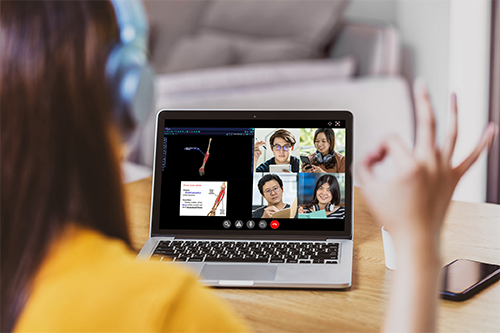
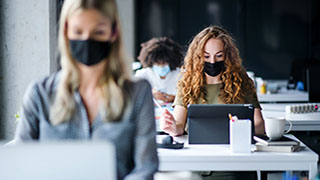
Ensure social distancing guidelines are met during on-campus lectures held in computer labs where students are each seated on a separate device instead of crowding over a cadaver.
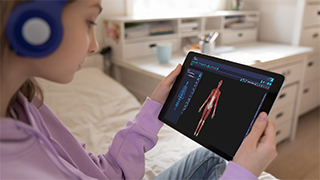
Ensure medical education is ongoing and uninterrupted during lockdown orders or when self-isolation is advised.

Create a session to hold a lecture anywhere and at any time. Students can also join the session from anywhere.
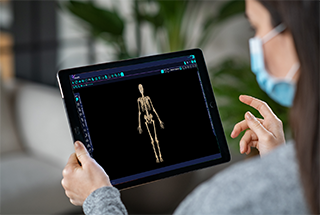
Use Vesalii applications to teach radiology and histology in addition to anatomy in efficient perfectly connected system.
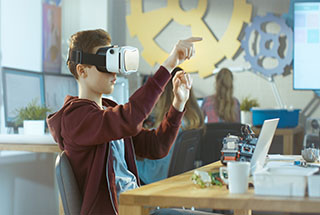
Students can be interactive participants in the lecture and are not only passive recipients, even when the lecture is being held remotely with participants being kilometers apart.

Save time by allowing the professor to give only one lecture to all students, instead of having to divide students into groups and repeat the same lecture to avoid crowding.

Improve student concentration by limiting in-class distractions when students are participating in the lecture from their homes.

Students can continue to use the application for self-study after the lecture is over and in the comfort of their home.
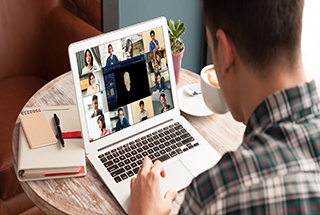
Students can create study groups and use the Vesalii applications to create sessions for their group where they revise what they learned in the lecture and study or prepare for new subjects together.
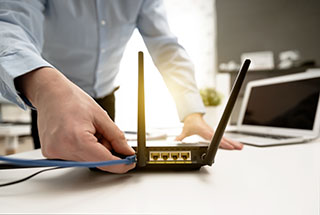
Using the OILS does not require the use of additional hardware as it only requires a computer and an internet connection.
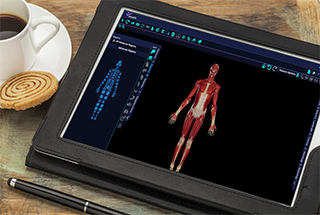
Using the Networking feature does not require the use of additional, third-party software, such as Zoom for communication.

Professors who use the module feature of Vesalii applications to create modules for a certain lecture can save these modules and use them in other lectures as needed. Lecture recording and sharing: Professors can record the lecture they present and share it with their students so they can revisit it if they need to.
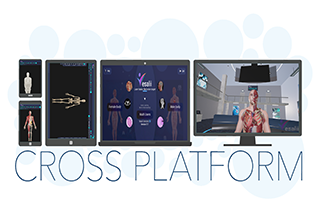
The Networking feature allows cross-platform sessions, meaning that Windows and macOS users can join the same session.
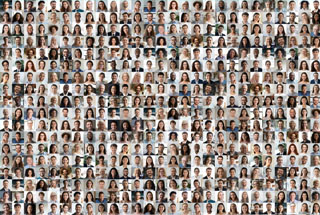
Up to 500 users can join a single session at the same time.
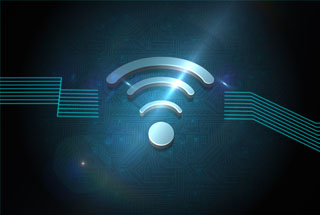
Internet data consumption while using the OILS offered by Vesalii is low, so users do not have to worry about data consumption limits.

Professors can control the seamlessly control the flow of the lecture by giving and removing access to control the model to any student, and by muting and unmuting sound coming from students.
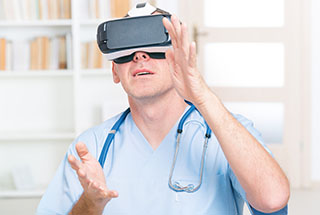
The professor presents a lecture using a Vesalii application to students in a computer lab where the professor and each student uses a different device, but all follow what the professor is doing in real-time on PC or VR goggles.
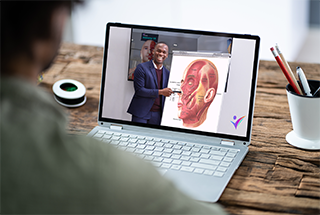
The professor presents a lecture using a Vesalii application to students where neither the professor nor the students are present on-campus.

The professor presents a lecture using a Vesalii application from his\her office or lecture hall to students joining the session from their homes.

The professor presents a lecture using a Vesalii application from his\her home to students seated in one or more computer labs on-campus.
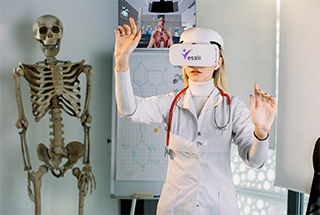
The professor gives a lecture using VR, dissecting the cadaver from his\her home\office, and the students watch the lecture on a PC screen or over VR.

The professor presents a lecture using a Vesalii application to students seated in more than one computer lab where the professor and each student uses a different device, but all follow what the professor is doing in real-time.
Sessions between the professor and their students can be created either locally or remotely.
Local Connection
Local sessions can be created over LAN in a computer lab where students can join the session from computers connected to the private network.Creating and joining a session is very simple and easy to use:
- Professor (server) creates a LAN session through the application and give a name to the session.
- Students (clients) join the session by finding its name in the available LAN sessions.
- The professor begins the lecture and students will be able to follow what the professor does on their devices.
- Access Control List (ACL) features allow the professor to grant students access during a session using the Vesalii application. Two types of access can be provided to a student. Partial control allows the student to only control the camera and any changes to the view made by the student here will not be observed by other users. The second type of access is full control in which the student will have control of the body and tools. Any actions taken by a student with full control will be observed by other users connected to the session. This feature is useful when students are asked to participate in the lecture by, for instance, giving a presentation or answering a question raised by the professor.
- Another control feature offered through ACL is allowing the professor to mute and unmute sound coming from other users to better organize the lecture and minimize possible disturbances.
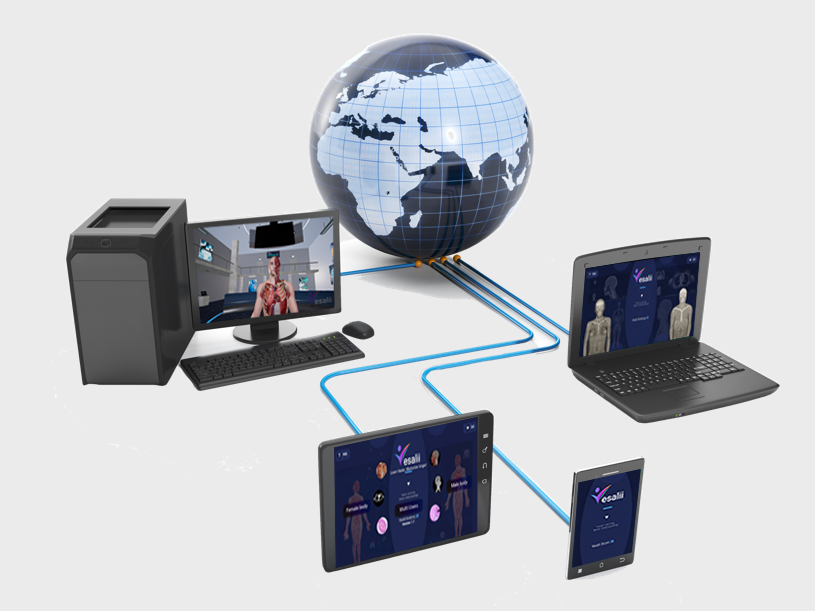
Remote Connection
Remote sessions can be created using a virtual private network (VPN), which allows establishing a private network over a public connection, i.e., the internet. Through this connection type, professors can create sessions that student can join, each from their own devices at home. Creating and joining the session is very simple and easy to use:
- Professor and students install a VPN software on their devices (either the VPN provided by Vesalii or another VPN used by the institute). Users connect to each other using the VPN software. This step assigns a distinct address identifier to each user.
- Professor (server) creates a session through the application as normally would.
- Students (clients) join the session by entering the session address of the server.
- The lecture can then proceed as it would have if the connection had been through LAN as mentioned above.
